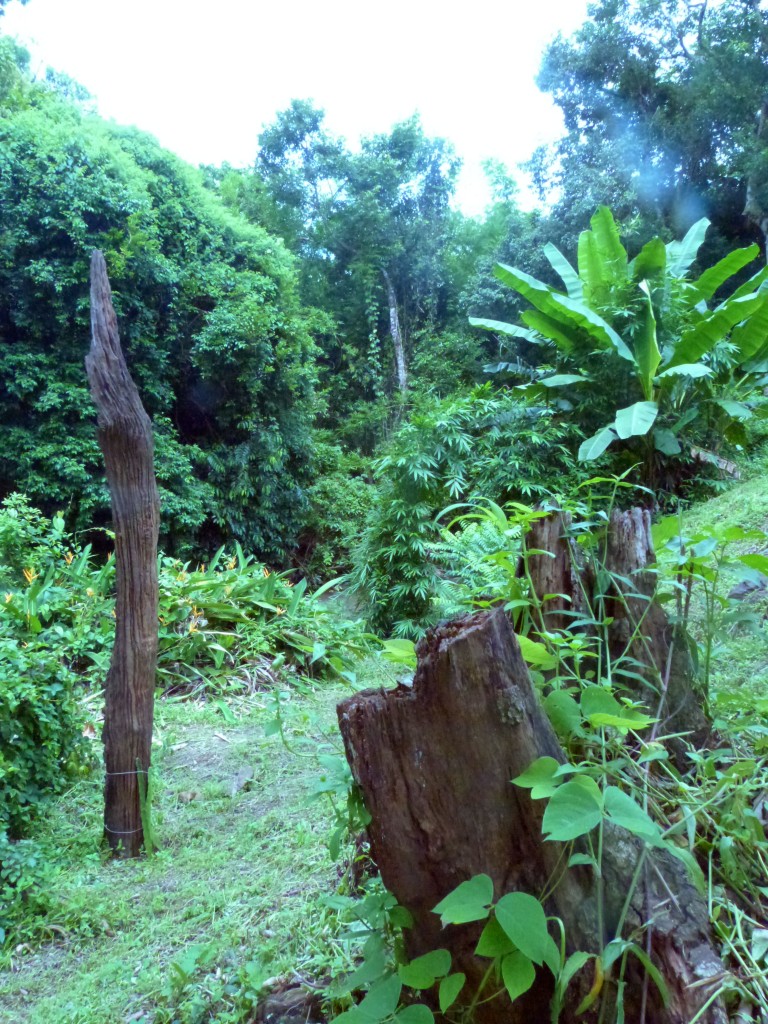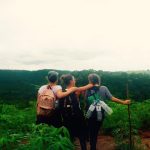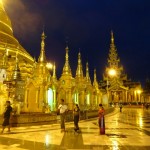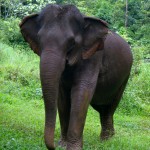With its gentle slopes, rich green valleys and rural charm, Cambodia’s Northeast is a natural getaway waiting to be explored…
In the early morning, Sen Monorom and its surrounding area initially seem more European than Cambodian. There is no dust, the heat isn’t yet suffocating and there are more trees than geckos. The capital of Mondulkiri province, the expanding town is nestled among green hills spotted with shrubs and valleys bursting with vegetation. The telltale red dirt roads woven among the slopes was the only immediate the giveaway that awoke in a new country.
Looking to learn more about this unique ecosystem from a relative local, Narla, Regine and I met with Nicola, a five-year resident of Putang, a nearby village. Nicola works for a local NGO, Nomad RSI, whose purpose in the area is two-fold; to support scientific research and to connect with local ethnic tribes who traditions are threatened by encroaching development. The NGOs goal, he told us, was to have the research arm guide the developmentprojects; to have a continual understanding of the regions changing contexts.
To date the group has worked on initiatives to eradicate malaria, to support maternal health and to make a record of tribal ways of life.
Knowledgeable and friendly, Nicola spoke about the changing landscape of the area both environmentally and socially. Surprisingly positive about the future, his most recent focus was to help local tribes find ways to sustainably integrate into the economy while holding on to their ethnic heritage.
Working with the Bunong — the dominant ethnic group in Mondulkiri — Nomad RSI has helped document the details of the many uses the jungle serves for locals; plants used for food, medicine and ceremony. It is this knowledge of the jungle that Nicola is hoping to market.

Still in development, he is hoping that cultural experiences like guided jungle-use walks and homestay options will help generate much needed income while allowing the Bunong to hold on to their traditions. This kind of participatory tourism is a small scale way to introduce modernity to the tribes-people while enriching a visitors experience in Cambodia. These kinds of programs are already successfully run in the Northern Plains and on the Tonle Sap Lake, with positive feedback coming from both guests and communities.
It is believed the Bunong (also spelled Phnong) have inhabited the highlands in the Northeast, with their population stretching across the Vietnam border, since before the stones of Angkor were laid. With the loss of the land around them, to rubber plantations or land-grabs, they are unable to continue practicing their traditional shifting agriculture. Known for their weaving — both baskets and scarves — we headed to Dak Dam in search of homemade goods and a touch of local colour.
When I laid the good-natured elderly weaver who befriended us, she was dragging an enormous water buffalo down the village’s dirt road. Upon spotting us, she dropped the herd’s lead and scurried into her traditional hut to fetch her wares to show off. Being nearly blind hadn’t stopped the giggling grandmother from stitching the trademark Bunong pattern into cloth.

Known for the their unique oral history, it was necessary for one of the younger villagers to translate Narla’s Khmer into Bunong. Reminding me of my own grandmother, I was hesitant to leave the village but was eventually forced to part ways with our host, two beautiful scarves and a cultural experience richer.






Hello,
I worked as a volunteer with Nicolas to help the Bunong community to develop alternative tourism in their village. Here is a website where you can find some information about the organized trips in that community : http://bunongtourism.wordpress.com/
The different day trips deal with the discovery of jungle and natural resouces used by Bunong people, handicraft and life in the farm. Their aim is to meet Bunong people and understand how they have adapted to their environment through wise usage of the natural and forestry resources.